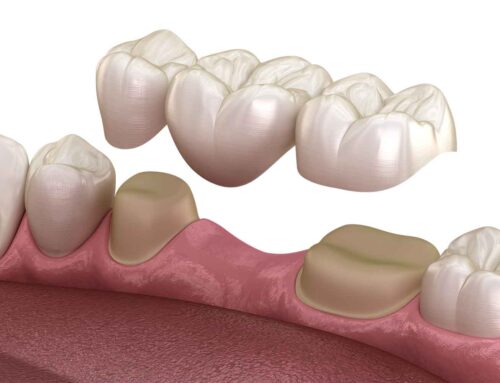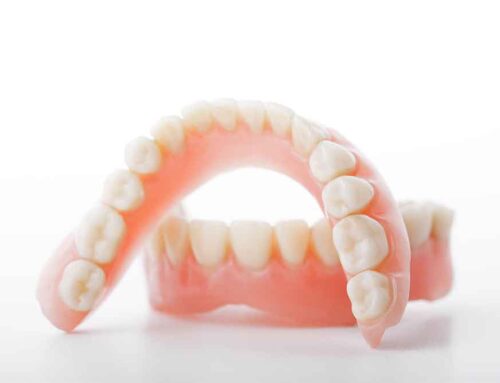When it comes to maintaining good oral hygiene, brushing your teeth twice a day is a fundamental practice. But what if I told you that there’s a little-known hero in the world of dental care that can take your oral hygiene to the next level?
What Is An Interdental Brush Used For?
Interdental brushes are designed to clean the spaces between your teeth and around dental appliances, such as braces, bridges, and dental implants. These small brushes are specifically crafted to access areas that regular toothbrushes often miss.
The main purpose of interdental brushing is to remove food particles, plaque, and debris from these tight spaces, preventing the buildup of harmful bacteria and reducing the risk of dental issues like cavities and gum disease.
Can Interdental Brushes Cause Gaps?
One common misconception about interdental brushes is that they can cause gaps between your teeth. This is not the case. Interdental brushes are intended to clean the existing gaps and crevices between your teeth, not create new ones.
In fact, regular use of interdental brushes can help maintain healthy spaces between your teeth by preventing the accumulation of plaque and food debris, which can lead to tooth decay and gum problems.
Can Interdental Brushes Cause Damage?
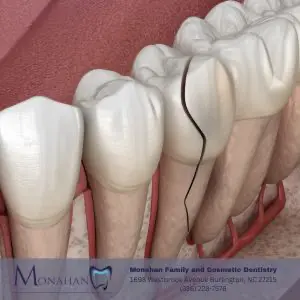 When used correctly, interdental brushes are a safe and effective tool for maintaining oral hygiene. However, improper use or excessive force can potentially cause damage.
When used correctly, interdental brushes are a safe and effective tool for maintaining oral hygiene. However, improper use or excessive force can potentially cause damage.
To prevent any harm, it’s essential to follow the recommended guidelines for interdental brushing. Avoid aggressive brushing, as it can irritate your gums and damage tooth enamel. Instead, gently insert the brush into the interdental space and move it back and forth to remove debris without applying excessive pressure.
How Do You Use An Interdental Space Brush?
Using an interdental brush is relatively simple, but it’s crucial to do it correctly to maximize its benefits. Here’s a step-by-step guide on how to use an interdental brush:
 Select the Right Size: Interdental brushes come in various sizes to accommodate different gaps between teeth. Choose the size that fits snugly but comfortably into the spaces you want to clean.
Select the Right Size: Interdental brushes come in various sizes to accommodate different gaps between teeth. Choose the size that fits snugly but comfortably into the spaces you want to clean.- Prepare the Brush: If your interdental brush has a protective cap, remove it. Ensure that the brush is clean and dry before use.
- Insert Gently: Hold the brush between your thumb and forefinger. Insert it into the interdental space at a 90-degree angle to your teeth. Be gentle, and avoid forcing it through; the brush should slide in smoothly.
- Clean in a Back-and-Forth Motion: Move the brush back and forth a few times to dislodge and remove plaque and debris. Be careful not to use excessive force to avoid gum irritation.
- Rinse and Repeat: After each use, rinse the brush thoroughly with water to remove any debris. You can use the same interdental brush for multiple spaces, but rinse it between each use.
- Dispose or Replace: Interdental brushes have a limited lifespan. Replace the brush when the bristles become worn or splayed to ensure effective cleaning.
What Is The Structure Of The Interdental Brush?
Interdental brushes consist of several key components that make them effective tools for oral hygiene:
- Handle: The handle provides a grip for easy maneuvering of the brush.
- Bristles: These are the small, fine bristles that make contact with your teeth and remove debris. The bristles are typically made of soft, flexible materials to prevent damage to your teeth and gums.
- Wire or Shaft: The wire or shaft connects the bristles to the handle and allows for insertion into the interdental spaces.
- Protective Cap (Optional): Some interdental brushes come with a protective cap for hygiene and safe storage.
Interdental brushing is a crucial addition to your oral hygiene routine. It allows you to reach the spaces between your teeth that are often overlooked, promoting better oral health and reducing the risk of dental problems.
By using interdental brushes correctly and regularly, you can maintain those hard-to-reach areas and enjoy a healthier, happier smile. So, consider adding interdental brushes to your dental care arsenal, and don’t forget to consult with your dentist for personalized guidance on how to use them effectively. Your smile will thank you!
Why Choose Monahan Family and Cosmetic Dentistry for Your Interdental Brushing Needs?
At Monahan Family and Cosmetic Dentistry, we are dedicated to providing you with the best possible oral care, including guidance on interdental brushing. Here’s why we are your best choice:
- Expertise: Our team of experienced dental professionals understands the importance of interdental brushing in maintaining optimal oral health. We stay up-to-date with the latest developments in dental care to ensure that we provide you with expert advice on interdental brushing techniques and tools.
- Personalized Care: We believe in a patient-centered approach, tailoring our recommendations to your unique dental needs and circumstances. Our goal is to help you achieve and maintain a healthy smile, and interdental brushing plays a vital role in that journey.
- Education: We are committed to educating our patients about the significance of interdental brushing and how to incorporate it into their daily oral hygiene routine. We will provide you with clear and easy-to-follow instructions to ensure you get the most out of this essential practice.
FAQs About Interdental Brushing
Q: Are interdental brushes suitable for everyone?
A: Interdental brushes are generally suitable for most individuals, but the size and type of brush you should use may vary. Your dentist can recommend the appropriate interdental brush for your unique dental anatomy and needs.
Q: How often should I use an interdental brush?
A: The frequency of interdental brushing may vary from person to person. In general, using an interdental brush once a day, preferably before brushing your teeth with a regular toothbrush, is a good practice. However, your dentist may recommend a different frequency based on your specific oral health requirements.
Q: Can interdental brushing replace flossing?
A: Interdental brushing and flossing serve similar purposes by cleaning between teeth. While interdental brushes are highly effective, they may not entirely replace traditional flossing. Your dentist may recommend using both tools in combination for comprehensive oral care.
Call Us Today!
Don’t underestimate the power of interdental brushing in achieving and maintaining a healthy smile. If you have any questions about interdental brushing or need personalized guidance on incorporating it into your daily routine, contact Monahan Family and Cosmetic Dentistry today. Our experienced team is here to assist you on your journey to optimal oral health.
Take the first step toward a brighter and healthier smile by scheduling a consultation with us.


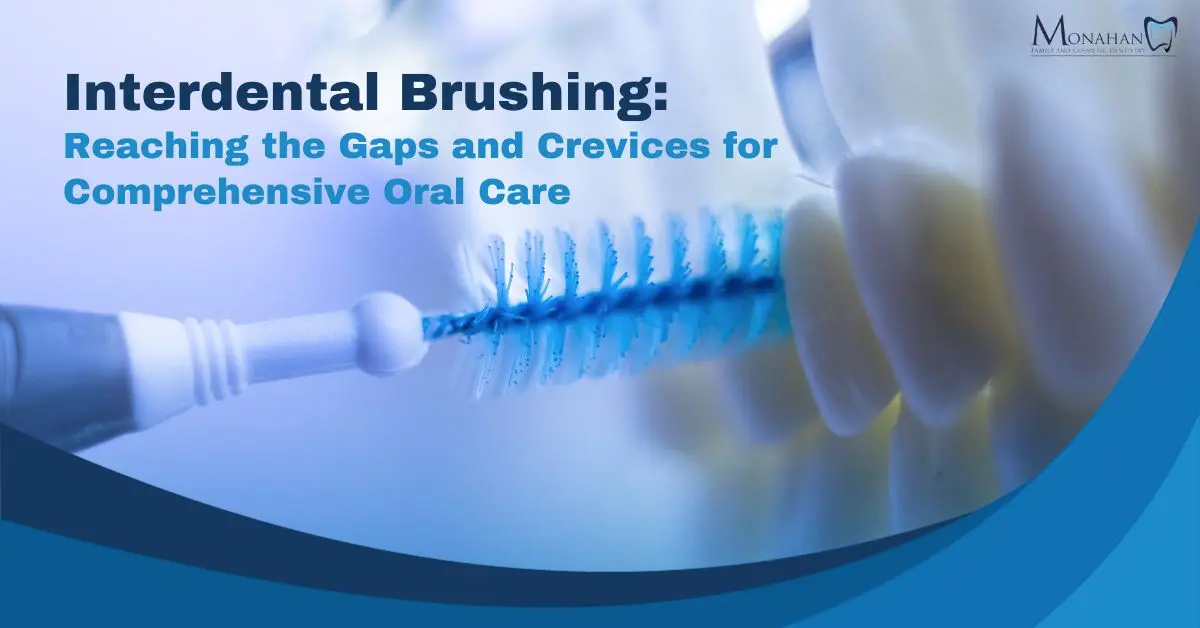
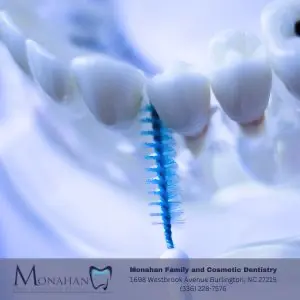 Select the Right Size:
Select the Right Size:

